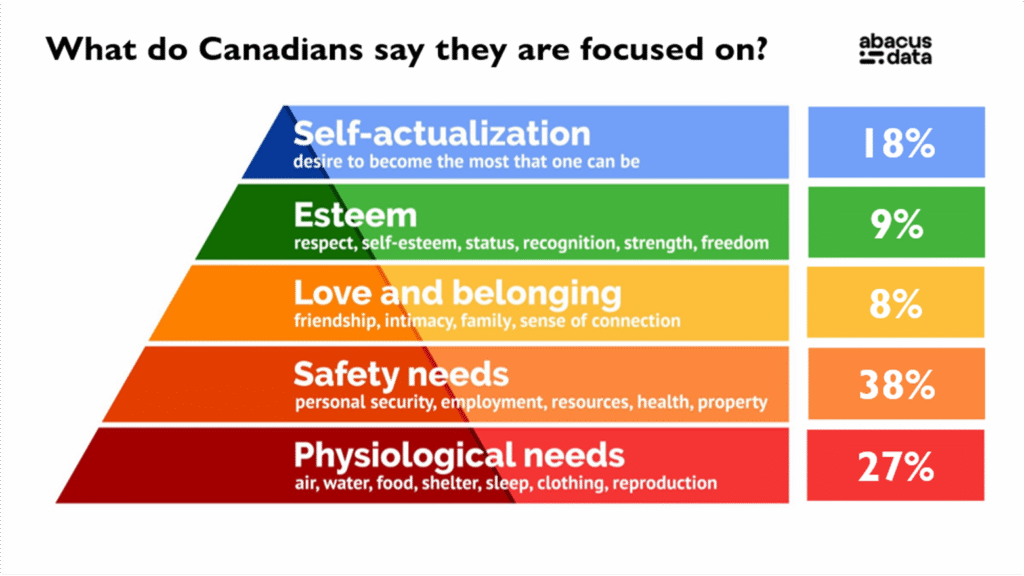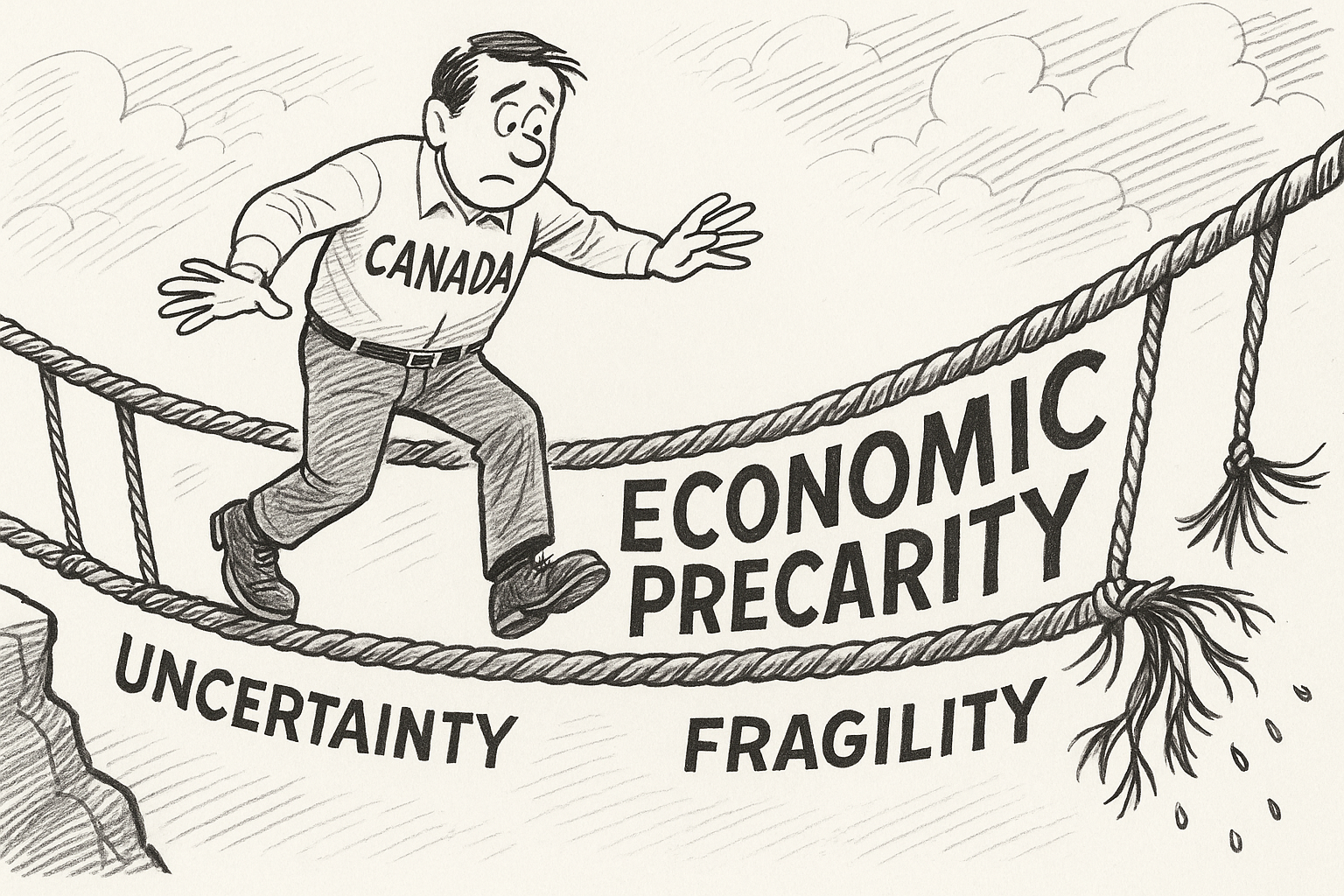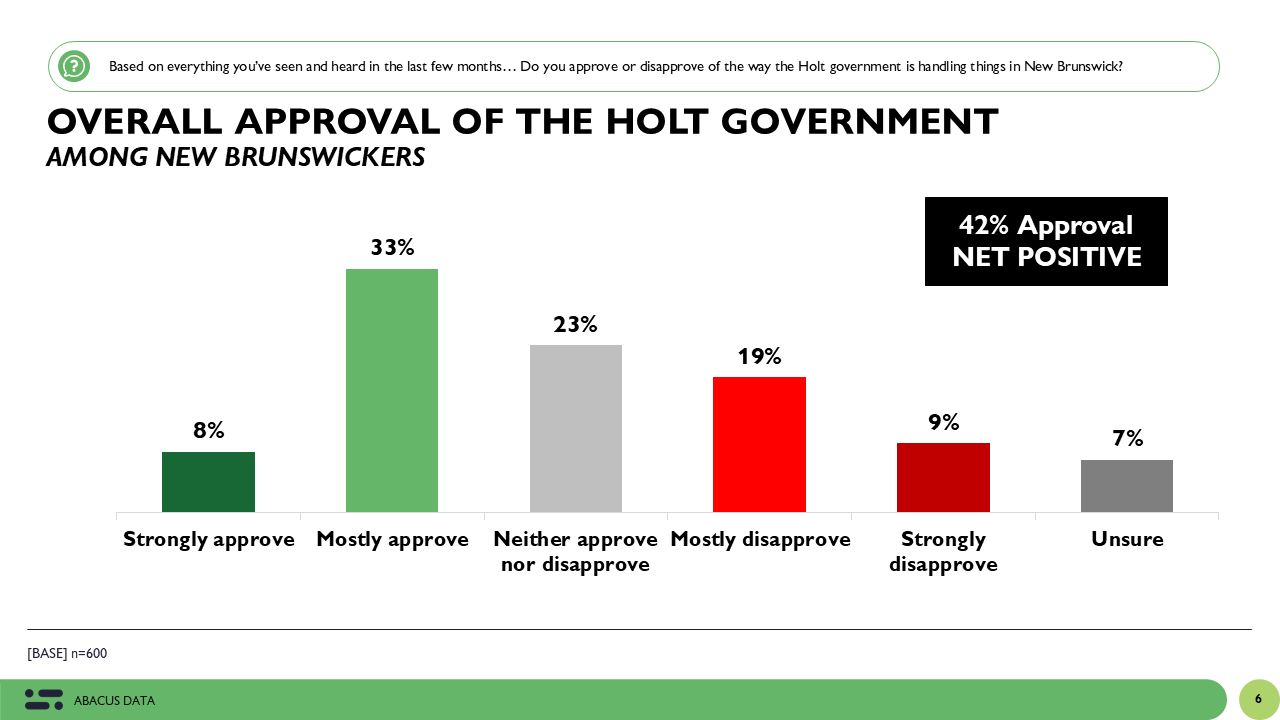Leading in an Age of Precarity and Polarization
November 14, 2025
Over the past decade, I have watched the public mood shift in ways I have not seen in twenty years of tracking opinion.
Canadians are not just frustrated. They are unsettled.
They are anxious about money, identity, stability, and the future. And they are looking at the people in charge of teams, companies, institutions, and governments to make sense of it.
Yesterday, I had the chance to engage with presidents from some of the leading public colleges, polytechnics, and institutes across Canada. We had a thoughtful conversation about politics, polarization, and the future of Canada.
And together, we agreed that polarization is now a symptom of something deeper. It is not just ideological division. It is the emotional logic of politics and society shifting under our feet.
In my own research, the big drivers of polarization are becoming very clear. Economic precarity. Identity stress. Stagnant living standards. A chaotic information environment. These pressures shape how people think and how they behave at work, in their communities, and in public life.
My team at Abacus Data asked Canadians what they are most focused on in their lives. The results say everything. Only 18 percent say they are focused on achieving their full potential. Just 9 percent are focused on esteem or recognition. Most are not thinking about ambition. They are thinking about survival.

Thirty eight percent say they are focused on safety. Personal security. Employment. Resources. Health. Property. Another 27 percent say they are focused on basic physiological needs like shelter, food, sleep, and the ability to support themselves.
That means almost two thirds of the country is operating from the bottom half of Maslow’s hierarchy of needs. When people are focused on survival, they do not take risks. They do not give institutions the benefit of the doubt. They do not assume others will play fair. They fall into zero sum thinking. The idea that if someone else gains, I must be losing.
Zero sum thinking is one of the most powerful accelerators of polarization in the data we collect. When people believe the system is not growing, they start to see other groups as competitors rather than neighbours. Every policy debate becomes a fight over who gets what. Every workplace change feels like a threat. Every social shift feels like a loss.
You can see this most clearly among young adults, especially young men.
They are entering an economy where housing feels out of reach and where stable work is harder to find. They do not feel respected in the culture. They feel the social contract has frayed. Many say they feel lost. It should not surprise anyone that they are more vulnerable to grievance-based content, influencers selling resentment, and online communities that exploit their insecurity.
This is the context leaders are operating in.
Whether you run a team of ten or an organization of ten thousand, your people are living in an environment that constantly reinforces scarcity, anxiety, and mistrust. It shapes how they respond to change and how they interpret your intentions.
What makes this moment even more challenging is the arrival of artificial intelligence.
AI is landing in a world that is already fragile. It will intensify everything we are dealing with.
It will disrupt jobs faster than our systems can adapt.
It will sharpen fears of being replaced.
It will make misinformation more personalized and more believable. Deepfakes will erode shared reality. Synthetic content will blur the line between truth and manipulation.
If leaders do not get ahead of this, AI will widen every existing divide. Between workers who can adapt and those who cannot. Between people who trust institutions and those who think the system is rigged. Between those who feel safe and those who feel ignored.
We have been here before. The late 1800s, often called the Gilded Age, was another moment of rapid transformation. New technologies created massive wealth for a few and deep insecurity for many. Inequality exploded. Workers moved to cities and found instability. Migration and cultural change created identity tension. Public trust in institutions collapsed.
But that period did not end in permanent fracture. It led to the Progressive Era. Leaders demanded reforms. Governments introduced civil service rules that cleaned up patronage. They passed antitrust laws that rebalanced the economy. They created regulatory bodies that set fair rules. They invested heavily in public education. They expanded labour protections. Communities built civic organizations that rebuilt social capital.
The lesson from that era is simple. Societies do not drift out of polarization. They lead their way out through institutional renewal and honest leadership.
So, what does that mean for leaders today?
First, you cannot be neutral about polarization. You do not have to be partisan. In fact, you should avoid it. But you cannot pretend this is someone else’s problem. As a leader your tone, your transparency, and your willingness to explain trade-offs matter. Your people are emotionally exhausted and often suspicious. They fill silence with fear. Clear communication lowers the temperature.
Second, you need to recognize that people are operating from the lower rungs of Maslow’s hierarchy. They want security and predictability. They want to feel respected. They want to know they belong. If you lead with empathy and clarity, you earn trust. If you rely on authority alone, you lose it. They want to be reassured.
Third, you need to create spaces where people can cross lines of identity, age, and background in ways that feel safe. You cannot rebuild social cohesion with statements. You rebuild it through practice. Through structured conversations. Through co-design. Through involvement in decisions. Through the small habits of sharing power.
Fourth, you need to treat AI as both a strategic tool and a social risk. Use it to improve service and performance, but be transparent. Explain how you are using it. Show people you are not replacing them without a plan. Build literacy in your teams. If people see AI as something hidden and imposed, you will deepen mistrust.
Finally, you need to model the culture you want. Calm. Curious. Transparent. Evidence based. Willing to course correct. Willing to listen. People are desperate for leaders who make things feel a little more stable and a little less chaotic.
We cannot control global forces. But we can decide how we lead through them. In this age of precarity and polarization, leadership is no longer about being exceptional. It is about being steady. It is about being clear. It is about being human.
That is what people are looking for right now. Leaders who get it and who get them. Leaders who bring people back into the same story. Leaders who show there is still a path forward that is not zero sum.
David Coletto is founder and CEO of Abacus Data. Subscribe to his personal substack and tune in every week on his politics podcast over at the Hub Canada.



